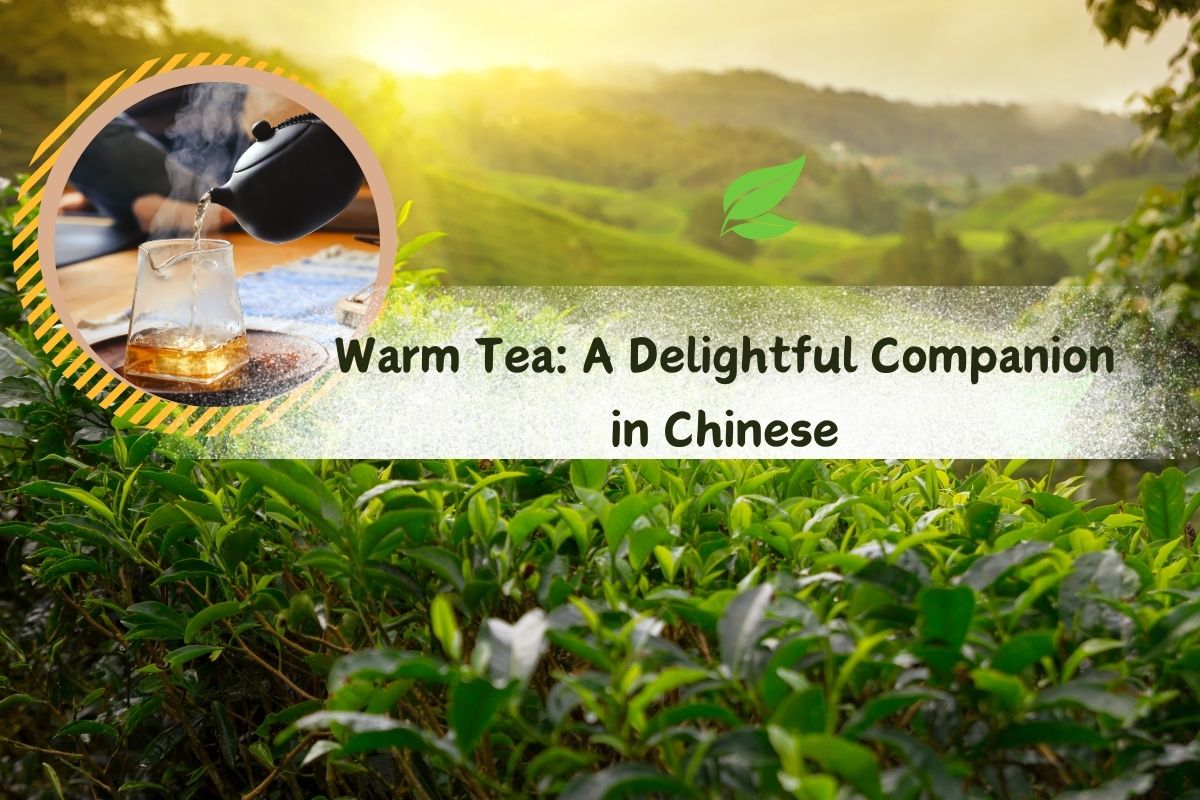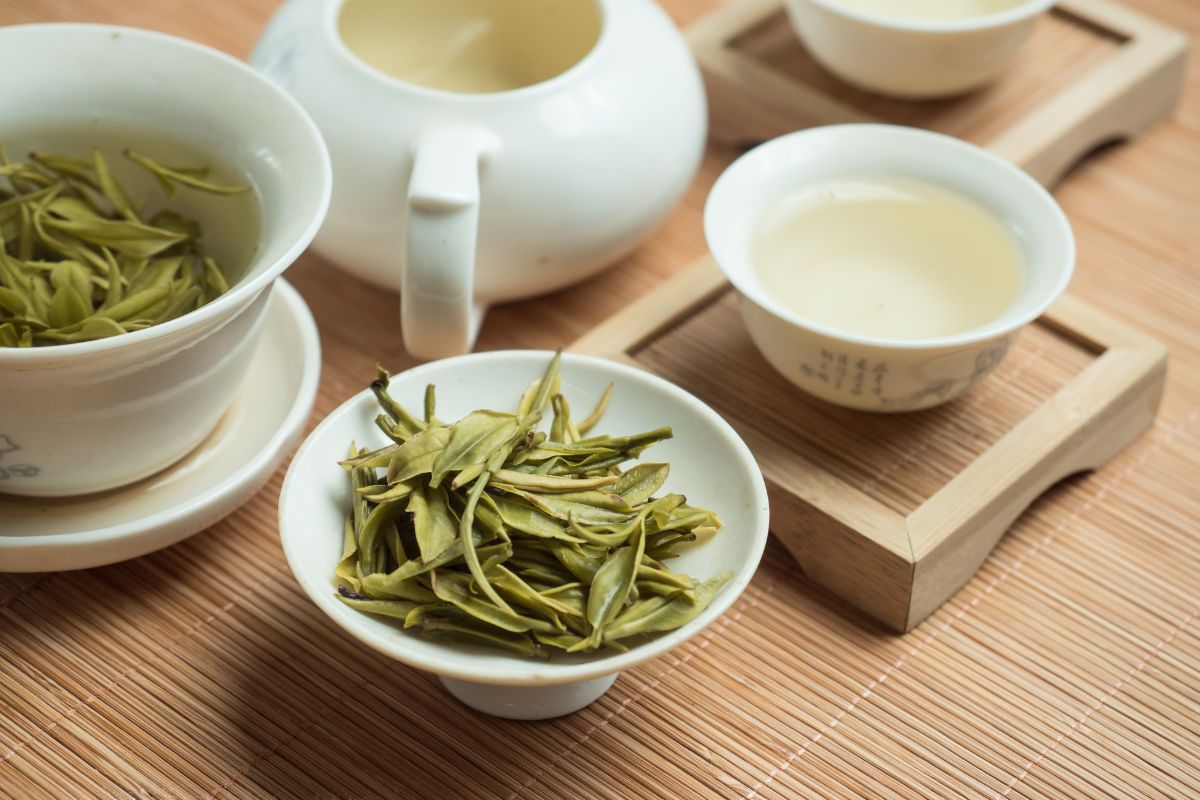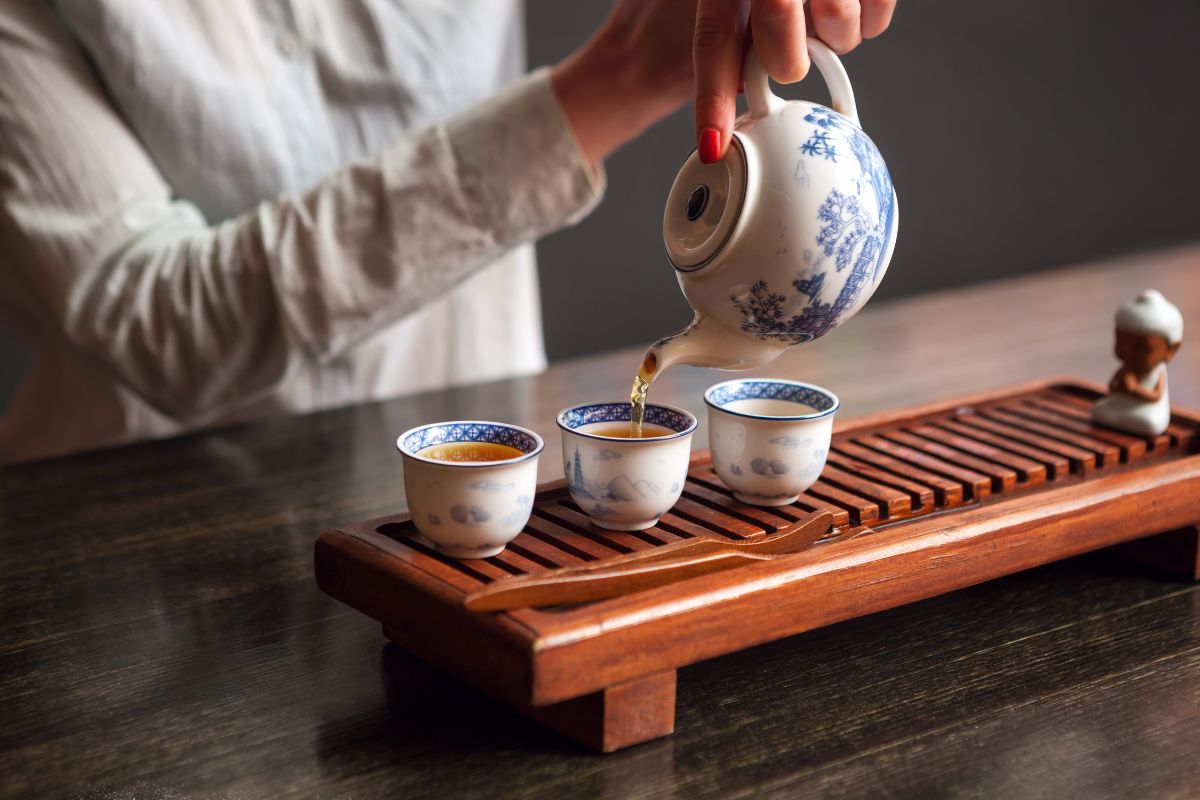Warm Tea: A Delightful Companion in Chinese Autumn and Winter
When the autumn breeze rustles, gently stripping branches of their yellow leaves, and the earth gradually enveloped in coldness, a cup of warm tea becomes a small joy in the lives of the Chinese people. The autumn and winter seasons, with their unique flavors, urge individuals to slow down, savor the beauty of life. At this moment, brewing a pot of hot tea, with steam wafting upwards, seems capable of dispelling the cold of the entire season. Why has a cup of tea become a tradition spanning thousands of years in China? Let us delve into the secrets together!

In Chinese tea茶(chá) culture, the focus lies on a state of mind. During autumn and winter, as all things quiet down, people's inner selves become more serene. Seated by the window, gazing at the scenery outside, holding a cup of warm tea, feeling its warmth, letting thoughts settle amidst the tea's fragrance. This is a state of harmonizing with nature, akin to the Taoist philosophy advocated by Zhuangzi. During this season, we adapt to the changes of the seasons, enjoying the tranquility and warmth brought by warm tea, experiencing the wonderful gift bestowed upon us by nature.
茶 (chá), noun, tea
Examples:
- I like to drink green tea.
我喜欢喝绿茶。
wǒ xǐ huān hē lǜ chá 。 - She served us some hot tea.
她给我们端上了一些热茶。
tā gěi wǒ men duān shàng le yī xiē rè chá 。
There is a wide variety of warm tea, each encapsulating unique cultural connotations. Red tea, with its vibrant color and robust aroma, akin to the warmth of winter sun, bestows warmth and strength upon individuals. Originating from China, red tea later spread worldwide, becoming an essential component of world tea culture.

In the autumn and winter seasons, indulging in a cup of red tea, savoring its rich fruity aroma and sweet taste, seems to evoke the sense of time's sedimentation and historical charm. The fragrant richness of Qimen red tea, the smoky aroma of Zheng Shan Xiao Zhong, captivates the senses.
The culture of red tea also manifests in its rituals and ways of consumption. In China, gathering with friends and sharing a cup of red tea is a common and heartwarming scene. Siting together, steeping a pot of fine red tea, engaging in casual conversations, sharing the bits and pieces of life. In this relaxed and pleasant environment, red tea becomes a bond of emotional exchange, transmitting the warmth of friendship.
On the other hand, black tea is another suitable warm tea for autumn and winter. Through fermentation and post-fermentation processes, black tea exhibits a dark brown hue and a mellow taste. Pu'er ripe tea stands out among black teas, with its unique aged aroma and rich flavor, leaving lingering impressions. Black tea holds significant historical importance, as it was a vital commodity along the Tea Horse Road, an ancient and mysterious trade route connecting different ethnic groups and regions.

Along the Tea Horse Road, caravans carried black tea, traversing steep mountains, bringing this natural gift from afar. The culture of black tea embodies the intercultural exchanges and integration among different ethnicities, witnessing the prosperity of ancient Chinese trade. On a winter afternoon, enjoying a cup of aged Pu'er tea, feeling its mellowness and smoothness, seems to traverse time and space, experiencing the magnificence and vicissitudes of the ancient Silk Road.
Apart from red tea and black tea, many other warm teas are beloved during autumn and winter seasons. For instance, aged white tea, with time, acquires enhanced medicinal value and taste, hence the saying "A year for tea, three years for medicine, and seven years for treasure." During autumn and winter, brewing a pot of aged white tea, adding red dates, goji berries, and other ingredients, not only brings a sweet flavor but also offers health benefits. This combination of tea and ingredients is also part of Chinese tea culture.

The art of tasting warm tea lies not only in the tea itself but also in the related utensils and rituals. A set of exquisite tea ware can add joy to the tea tasting experience. Yixing clay teapots, with their unique material and exquisite craftsmanship, have become cherished possessions of many tea enthusiasts. These teapots茶壶(chá hú) absorb tea juices, and the longer they are used, the more they radiate a warm luster, enhancing the fragrance and flavor of the tea. Brewing tea in a Yixing teapot focuses on hand techniques and water temperature control, while blue and white porcelain, Ru kiln, and other porcelain tea sets enhance the tea-tasting experience with their artistic ambiance.

茶壶 (chá hú), noun, teapot
Examples:
- The teapot is made of porcelain.
这个茶壶是瓷制的。
zhè gè chá hú shì cí zhì de 。 - She filled the teapot with water.
她给茶壶装满了水。
tā gěi chá hú zhuāng mǎn le shuǐ 。
Tea, always warm, accompanies people through beautiful moments. Whether sitting with family, enjoying the pleasures of life together, or alone, immersed in the world of tea, warm tea provides satisfaction and solace, becoming an indispensable aspect of life. It is not just a cup of tea but also an emotional tie, connecting individuals with the beautiful moments of life.